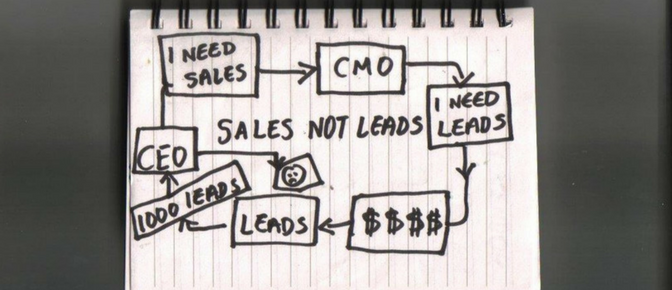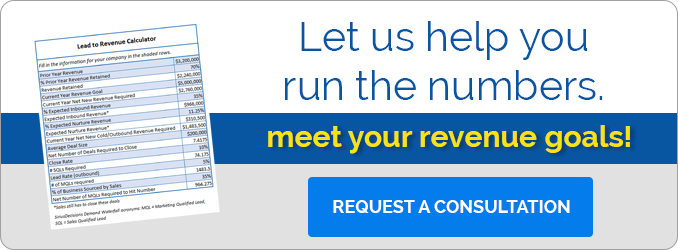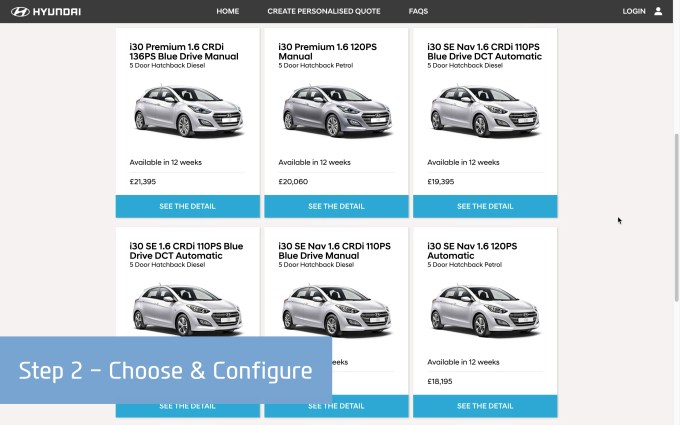I caught up with Adele Revella, CEO of Buyer Persona Institute, and author of Buyer Personas: How to Gain Insight Into Your Customer’s Expectations, Align your Marketing Strategies, and Win More Business. Adele’s unique perspective derives from decades of experience as a sales and marketing executive, trainer, researcher, and entrepreneur. In this podcast, we talked about buyer personas- they’re built, so now what?
Adele Revella: Most people think that a buyer persona describes the person that they want to market to, and this is part of the correct answer. A buyer persona is essentially an example that allows you to understand the buyers that you want to market to or sell to so that you can be more effective at influencing their decisions. The most important part of the buyer persona is understanding how, when, and why that person, that buyer makes the decision to leave the status quo, whether they’re using a current product or buying one for the first time, and actually make the decision that now’s the time to go do an evaluation and buy something new.
David Reimherr: This is really what separates you, and why your book was named one of the top five business books by Fortune magazine because you’ve taken it to the next level. Let’s assume we have the buyer personas built. You’ve gone through the process of creating them – now what are the next steps to best use the information that you’ve gathered?
AR: This is perfect, because most people say, ‘Hey, we’ve got our buyer personas done, and we’re going to make posters and put them on the internet and share them at meetings,’ and that’s not the next best step. Actually, what we’ve discovered is that while it’s okay to distribute your personas, most people in your organization aren’t really going to change their behavior, aren’t going to do anything differently as a result of just sharing who your buyer is and what you’ve learned about how they make buying decisions. So what you want to do next – and there’s a number of places to go – but we think the most important next step is to develop new ways to approach your buyer in terms of your content strategy, and your messaging, based on everything you’ve learned about the attitudes and perceptions your buyers have about this decision.
DR: So, what would you suggest, if you’re a company and you have that done, should there be a big meeting where you review everything? How many people should be involved? Who should be involved? I want to give people direction on hard next steps they can they can apply in real life.
AR: What we recommend is that you find four to six experts in your company who understand exactly what you can and can’t do, and maybe at least one person who knows the competitive landscape pretty well. So four to six people in a room, and your buyer persona, if you’ve done it the way we talked about in our last podcast, is going to take you through five different categories of insight into what affects the buyer’s decision to choose you. So it’s going to tell you maybe four or five triggers that cause buyers to say, ‘Hey, we want to invest now.’
And it’s going to have four or five insights, maybe more, around the benefits that buyers care about, and it’s going to have several insights around the objections buyers have, and the obstacles they face, and it’s going to have many insights, maybe six, or seven, or eight, around all the attributes of your company and your product and your service that buyers evaluate. Now you might have a list of thirty things that you now know from your research that affect your buyer’s decision, and they’re basically the questions buyers are asking when they’re on your website, or they’re engaging with your sales people, or they’re having any kind of marketing interaction. They’re saying, ‘Can this company address my priorities? Is it going to give me the outcome I expect? How can they help me overcome these obstacles I have to succeed and are they qualified to deliver the capabilities, and functions, and features, and services I need?
And since we know every single one of those, and we’ve got verbatim quotes about every single one of those thirty or forty things that factor into the buyer’s decision, we can now sit in a room with our internal subject matter experts, and we can work through each of those thirty or forty things one at a time, and write a statement of capability that would just wow the socks off of that buyer, that would directly and specifically answer that buyer’s concerns about whether or not you’re going to be able to deliver what they need, or whether or not you’re going to deliver the benefit or outcome they care about.
DR: If you’re able to do that, everything you do will have a higher success rate. Every ad, every message, if you start getting a few extra percentages in your favor across all the different areas it adds up. Now, where do companies sometimes fall just short of hitting the mark with this messaging? I think you gave an example in your book of discovering that buyers were reluctant to invest in solutions that might become obsolete in a few years, and then the messaging that you gave, incorrect messaging, or messaging that might not quite cut it was, ‘We have the flexibility to design a solution that meets your needs now and in the future.’ That’s a bit of a platitude.
But can you give some insight on this?
AR: Yes, and it really does go back to the research phase, because if you did the interviews correctly with your buyers, that summary headline, like ‘We’re concerned about whether you’re going to be able to address our needs in the future’, is accompanied by in-depth quotes from buyers where they talked about what they thought their needs might be in the future, and specifically what they needed to hear from a company in order to believe that they could actually achieve that. And so when you’re in this workshop – we take about eight hours to do this workshop with clients – we want you to sit there and read every one of those verbatim quotes that relates to that key finding around the future proof aspect, and say ‘What is the buyer really concerned about here?’ and ‘Let’s get much more specific about how we’re going do this.’ Don’t just say, ‘Oh yeah, we can do that.’ My favorite one is ease of use. I go to websites and everybody says their products are easy to use, so it’s almost laughable to think that the buyer would go to your site and see those words and go, ‘Oh, sweet. This is the answer to my dreams. This company’s product is easy to use.’
- It’s how are we going to provide proof about our future?
- How are we going to provide evidence?
And when we do the interviews and we get buyers to talk about that in depth, they’ll give us clues, and now again we’re sitting in this meeting with our subject matter experts, and we’re looking at those clues, and we’re saying ‘We as a company, how can we answer this problem?’
DR: I believe you said ‘Effective messaging emerges at the intersection of what your buyers want to hear, and what you want to say,’ and it’s not one or the other. So I think if you are kind of out there trying to put it together, and still need some examples, just draw two circles and start what intersects of what you want to say, and all the information you gathered, what it looks like buyers want to hear, and start there. Would you say that would be a very good place to kind of help people who are still trying to get past the platitude of ‘How can I do that?’ I feel like that really directs people in a good direction.
AR: Yes, or make a list. I do it with a Venn diagram, and I think you saw that in the book where there are two overlapping circles, but the practical step is, now you’ve got a list of your persona, of everything your buyer wants to hear, and you know everything you want to say, so start matching those things up. Sit down and build a table, and say ‘Okay, here’s something that the buyer wants to hear,’ and we go over and we look at what we have to say, and we say ‘Ah, there’s a good match here,’ and then you start to look at what you want to say and you said ‘Wait a minute, the way we answered that, does that really differentiate us? The way we said that?’ Because being able to say that ‘we’re easy to use’ or ‘sure, our product’s future-proof,’ anybody could say that. So now what you’re doing is, you’re kind of starting to inspect all your statements, and saying ‘How can we talk about our ability to be easy to use, or future proof, in a way that it would be hard for our competitors to answer that question for the buyer?’

Because your buyer’s asking these questions of every company that they’re considering, so you want to not only answer their questions, but you want to answer them in a way that’s unique. And sometimes it’s not so much that you do it differently, it’s the fact that you were willing to get past the platitudes – your word, David – and really get into the details of how you do that. Sometimes it’s just the mere fact that your marketing got smarter, and you didn’t just say, ‘Hey, we’re easy to use,’ you actually started proving it to people, and talking about what you do to make it easy to use, or having videos around how it’s easy to use, or talking about the level of R&D commitment you have to future proof a solution – something that your competitors aren’t doing that will help you stand out from the massive morass of companies that are all competing for the same business, and all using the same jargon to answer your buyer’s question.
DR: You kind of touched on something we were going to dig into in a little bit, but yeah just to kind of reiterate, I can imagine a ton of situations where there are other great companies who can offer what you can, just as you can offer what they can. Very rarely you’re going to have some unique and patented idea where the world’s just your oyster. There are other people who do what you do, and that’s okay. But what you’re saying is, we’ve got to try to figure it out and do it in the shorter messaging, but what you’re saying is a good way for people that can try to stand out.
Regarding capabilities, what you can offer as a company through a product, or solution, or service – if you find a highly rated buyer expectation, which means buyer expectations are basically what buyers expect, what solutions they expect to be provided to them if they invest in your solution, correct?
AR: Right. What are the attributes that matter to your buyers? They really want it in purple, and you don’t have in purple, you only have it in blue and pink, what are we going to do, right?
DR: Exactly. So if you find a highly rated buyer expectation that your company or solution can’t deliver on, and you don’t have any way to address those particular needs to that exact expectation, but it’s super highly rated, do you go ahead and just leave that completely out of your messaging?
AR: If it’s something you genuinely can’t deliver, it sometimes – and without working with a specific example it’s tough – but if there’s a workaround – does affect product strategy, we’ve got to, ‘Hey, listen, we’re seeing that buyers really need such and such, it’s affecting our sales cycle,’ then maybe this becomes a priority for your development of your product and service.
DR: Let’s say you can kind of do it. Not that you can’t completely do it, but you’re so-so at it, and other people are great at it.
AR: Then I want you to talk about it.
- If it’s a very highly rated attribute, and remember we’re talking mostly about marketing here, so if it’s very highly rated and you don’t have the best solution here,
- I want you to include it in your marketing messaging, and then
- I want you to help your sales organization get prepared when they get in front of the fire, and now they’ve got to deal with the detail around that.
- Prepare your sales organizations that this is going to come up, buyers are going to ask about this, here’s the objection you’re going to face and work with your sales people to come up with how they’re going to explain the value of that workaround.
If this is super highly rated by one segment of the market, one type of buyer, then we’d be looking to see if there’s a different persona out there that wouldn’t rank that attribute as highly. And sometimes – and this is more sophisticated application of buyer persona work -sometimes what we’ve said to the client is, ‘Look, there’s parts of the market that are really going to care a lot about A, and you really kind of aren’t that very good at A, but let’s go find a part of the market where B, C, and D, where you do shine, are more important. Then let’s help your sales people target the deals that they’re going to win, because you do have to worry a little bit, and that’s why this is kind of a complicated topic, is you have to worry that if marketing’s getting sales people in front of buyers that that kind of idea isn’t good enough, then you’re just wasting the sales people’s time, and that’s the worst thing you can do.
DR: So if it’s super important to the buyer, and your company wants those types of buyers, get better. At the end of the day, you’ve got to get better. In the company, sales and marketing only can do so much, and that’s what always gets lost in sales and marketing conferences- the big assumption is that all the companies are great at doing what you’re saying you can do. But that’s obviously not the case.
AR: Nobody is great at everything, so it is hard. That’s really the value of this, and you talked about those overlapping circles, with ‘here’s what your buyers want to hear,’ and ‘here’s what we have to say.’ In part of my keynote, I show that there are different overlapping circles with what buyers want to hear. Not all buyers want to hear the same thing, and so it’s partially finding that group of buyers where you have the best possible overlap. And so one application of our work is to start to do segmentation and to start to help clients anticipate which parts of the market are going to have the best overlap with what they have to say. That’s sometimes a very vital part of this because the thing is when companies are trying to grow – if you’re talking about small companies and five percent of everything – when small companies are trying to grow, they tend to say, ‘Hey, we’re going to go market to everybody. That’s our growth strategy, because heck, we don’t want to turn any business away.’
But the reality is – and this is hard for a lot of companies to take on – is that there’s probably parts of the market that you are better serving than others, and the persona work can help you to figure that out, can help you to see different overlapping circles where different buyers want to hear different things, here’s our capabilities.
DR: What do you suggest companies do when you have a feature solution or service that you provide that is super amazing, super unique, super helpful, and it’s just the best thing in the world, but it doesn’t necessarily resonate high with what a buyer wants? Although you know they really do need this, but through your research, you’re not really finding that to be high on the list of what’s going to resonate with them. Should it be completely left out of the marketing messages? Where should you go when that happens?
AR: This is more common than the first question you asked. And boy, this is really hard medicine to take. Nobody wants to hear that their baby isn’t beautiful in the eye of the beholder. And so here’s what we do – we say look, first of all, we want to take all the findings we do have and recalibrate our thinking about it. So we’ve got this great capability about the way we bundle all these things together, or we do this package solution, and buyers just don’t see that yet, and we actually do a little bit of testing in our interviews around those value props so that not only do we understand what the buyer cares about when they have made a previous decision, but we introduce this new capability that our clients care about, and we get the buyers’ reactions. So now we have really good evidence that this isn’t resonating with a buyer, and what we do is say, ‘Look, we’ve got to find a way to connect this greatness that you guys believe in over here, to something that does matter to your buyer.’
We’ve got to find a way to repackage the value of this great piece into something that has a hook, and to something that does matter to buyers. We’re marketers, right? We’re going to find a way to present that value in a different way, and it’s about getting inside that. So if we have the most flexible solution, and our buyers don’t really care about flexibility, it’s not high on their list, we’re going to find something they do care about, where flexibility would actually address that issue, and we’re going to go present it that way.
DR: So, when you’re limited in the amount of space, and what you can say in a marketing message, you’re definitely going to need to lead with what buyers care about. Then it’s going to be more of the salesperson’s job to kind of bridge the gap to all these additional things that you have, but you definitely need to lead with what buyers currently are caring about today.
AR: Exactly.
DR: To close with a couple of questions, now that we have all these areas in defining messaging, let’s just go ahead and give some examples of all the different places that people can use these. Not specific examples, but different areas, SEM, pay per click ads, content marketing, retargeting – what else can we sell? Because now that you have the messaging, let’s hear all the different areas that you can utilize that messaging.
AR: Well part of the reason why I say start with messaging is because fundamentally, your message is embedded in every single marketing activity you do. It’s almost like I’d have a hard time coming up with anything that this didn’t affect because it’s always about the message. And I see so many marketing blogs and so forth talking about all these things, the buyer’s journey, they need a white paper, they need this, they need that, and I’m going ‘Yeah, but that’s just the embodiment of the message, and frankly buyers, while they would like to see different formats, and videos and all that, and they do have preferences, and we learned that in the buyer’s journey, the most important thing is not about the format of the content, but the content of the content, the words and the content.’ Once you get this message right, there isn’t any place that you shouldn’t be using this message. Every single place you do, including all the way into your sales training and sales playbook.
DR: So obviously you’re above the fold and home page, right?
AR: Absolutely.
DR: It’s very static for many companies who aren’t involved in an ongoing content approach where you’re constantly updating your website or media companies who do that. Many sites I’ve seen are a set it and forget it thing. Nothing ever happens to it. So don’t forget, once you go through this exercise, you might need to do a revamp of your website. At the very least, you might need to do a revamp of the words you’re using on your website, even if you don’t do a big redesign. Use it anywhere and everywhere. Just be consistent once you’ve zeroed in on your strategy of the messaging.
What if a company is not great at copywriting? Where can they turn?
AR: Well, personally, I’m don’t think I’m a great copywriter either, so I go out and hire somebody to do it, and that’s the best case. But you know what, I do want to emphasize this answer – if you get the right kind of message, the creative aspect of writing the copy isn’t as critical. I think a lot of people have tried to use copywriting instead of saying something important. We’re going to go out there and try to be the most creative because we’re saying the same thing as everybody else, so we’re going to make it more. And I think we get this from consumer marketing, we get it from watching TV ads and consumer marketing where somebody does something really clever, and we remember it because it was clever, but the sheer facts are that if you give your buyers useful answers to their questions, it doesn’t have to be clever. It just has to be simple and concise.
And the whole process of going through what we talked about at the beginning of this podcast of looking at what your buyers want to hear using their words, being ruthless about striking the jargon – so get rid of all the adjectives, all of them, all of the fancy words, and just give them the information, and then copywriting isn’t as important. Like I said, I still use a copywriter, I think copywriters are amazing, I care about that a lot, but it isn’t as critical. If you’re on a tight budget, and you don’t have a copywriter, and this isn’t your best skill, join the club, and just make it simple and clear.
DR: And you’re not deemphasizing copyright, and you’re just emphasizing the meat and potatoes of it, the actual subject.
AR: Exactly.
DR: You mentioned a great resource if people wanted to get better at copywriting. Whose book was it again?
AR: Everyone Writes by Ann Handley.
DR: Thank you so much, Adele. How can people continue to learn from you?
AR: We’re at buyerpersona.com, or you can find us on Facebook, facebook.com/buyerpersona, or Twitter @buyerpersona.

ADELE REVELLA
Adele Revella is CEO of Buyer Persona Institute and author of Buyer Personas: How to Gain Insight into Your Customer’s Expectations, Align your Marketing Strategies, and Win More Business (Wiley 2015), recently named a Top 5 Business Book by Fortune Magazine. Adele’s unique perspective derives from decades of experience as a sales and marketing executive, trainer, researcher and entrepreneur.
To View The Original Blog Post, Please Click Here.







 Hyundai is launching a new website called “Click to Buy” in the UK, where customers can purchase its cars directly with fixed pricing and no haggling. The online model of car sales is one that Tesla employs widely for its own vehicles, owing in part to its inability to run its own physical dealerships in many places. The new Hyundai UK direct sales start January 6, 2017, and…
Hyundai is launching a new website called “Click to Buy” in the UK, where customers can purchase its cars directly with fixed pricing and no haggling. The online model of car sales is one that Tesla employs widely for its own vehicles, owing in part to its inability to run its own physical dealerships in many places. The new Hyundai UK direct sales start January 6, 2017, and… 


 Within the past few months, NetSuite, Marketo, LinkedIn, FleetMatics and LogMeIn have each been acquired or merged for a combined value of more than $50 billion. At this rate, public SaaS companies may become an endangered species. Clearly, PE investors and larger technology companies sense opportunity and value.
Within the past few months, NetSuite, Marketo, LinkedIn, FleetMatics and LogMeIn have each been acquired or merged for a combined value of more than $50 billion. At this rate, public SaaS companies may become an endangered species. Clearly, PE investors and larger technology companies sense opportunity and value. 







 This is our third expanded post from our article on
This is our third expanded post from our article on 












 People tend to be precise with small numbers and imprecise with larger ones.
People tend to be precise with small numbers and imprecise with larger ones.
































